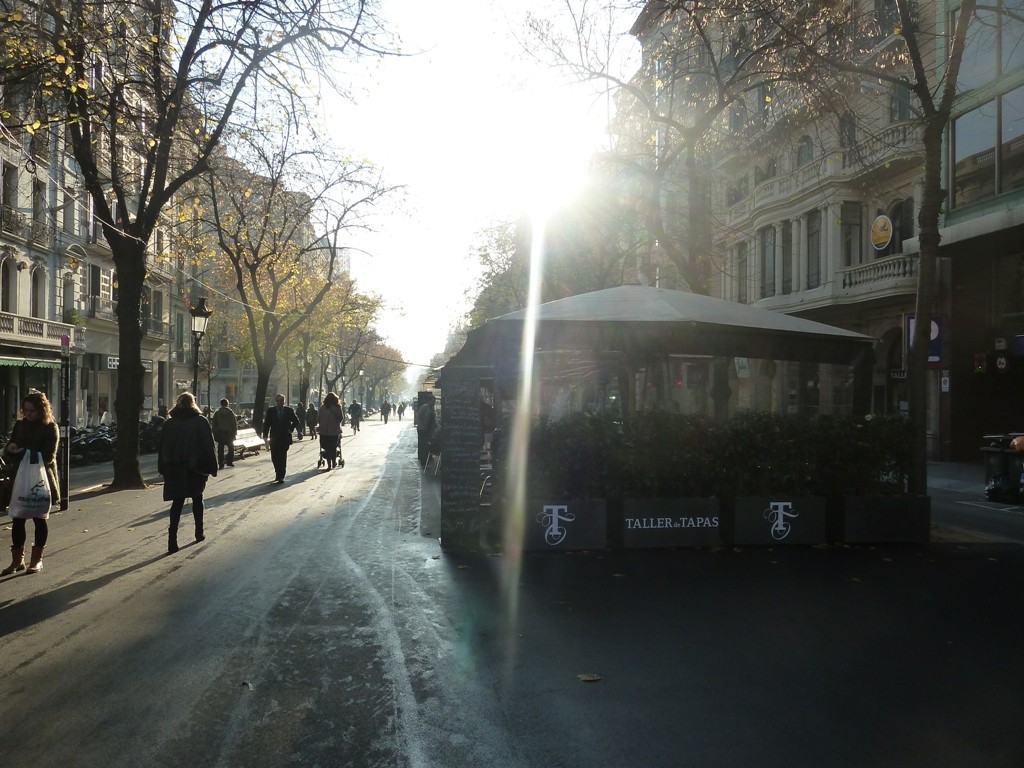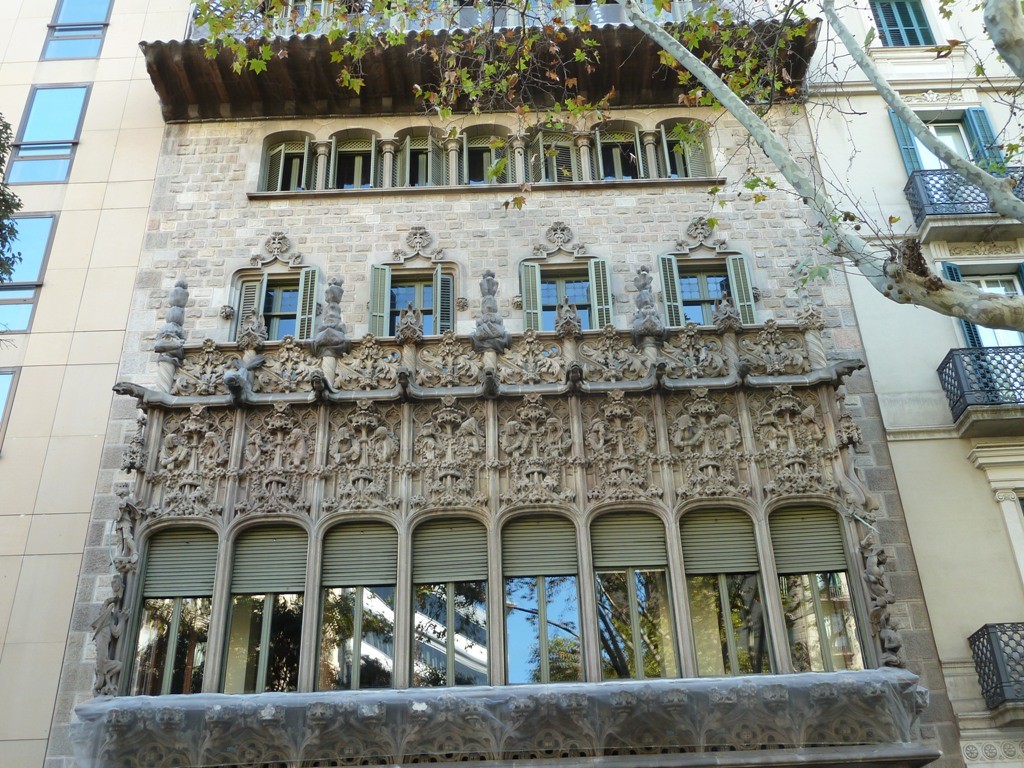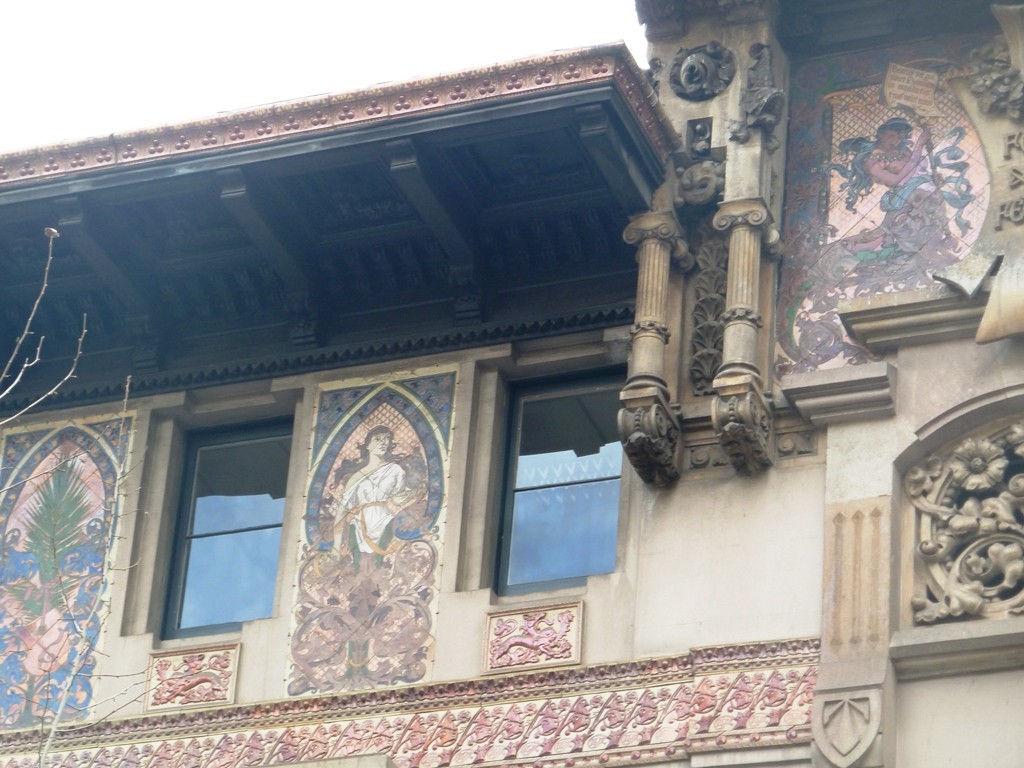If a time machine brought us back in time to the first decades of the 19th century, few people would probably identify that unspoilt, almost desolated area with the modern Eixample, probably the most fashionable district in Barcelona. As a matter of fact, two rows of trees were the only significant feature located where now lie a series of restaurants, stores and the most elegant hotels in Barcelona. The Eixample, indeed, was the result of a 19th century expansion along the two sides of Passeig de Gracia, the avenue connecting Plaza de Catalunya (and the Ciutat Vella) and the district of Gracia. Not by chance, the Eixample is the temple of Modernism, housing a spectacular series of palaces built with the criteria of this revolutionary style.

Of course, the name Eixample immediately calls to mind three spectacular Modernist gems: La Sagrada Familia, Casa Battlò and Casa Milà. The former is located on the right side of Passeig de Gracia (called La Dreta dl Eixample), while the other two buildings look out onto the avenue itself. Although, many other features of interests may be admired in the Eixample, provided one does not mind walking around for a few minutes (as the district is really very large).

Setting off from the southern area of the Eixample, the only place worth seeing on the right side of Passeig de Gracia is Casa Calvet, one of the first creation of Antonì Gaudì. Currently housing a well-known restaurant, the building clearly bears the marks of the style of the architect (sinuous lines, wrought iron balconies). The Esquerra de l'Eixample (left side), instead, houses a series of remarkable landmarks. Going along one of the main avenue of the city, the Gran Via de les Corts Catalanes (or simply La Gran Via), you will find the palace housing the University of Barcelona. The building is quite modern, dating back to the second half of the 19th century, but at the same time is quite interesting, being the result of a combination of styles. Retracing your steps for a while, you may then head northward along the Rambla de Catalunya. A sort of quieter version of the Rambla par excellence, it is anyway flanked by a series of interesting stores and an endless sequence of pubs and restaurants.

Carrer d'Aragò will lead you back to Passeig de Gracia, right in time to admire the splendour of Casa Battlò and Casa Amatller. On your way there, do not fail to admire the building housing the Fundaciò Antoni Tapies, at least for the curious composition placed on the roof, of course a product of the artist's genius. Walking around Passeig de Gracia, you will find that even the benches are not common at all in this extraordinary avenue. The circular marble benches, surrounding colourful and lively bed-flowers, are indeed a pleasant sight themselves! Once reached the crossroads between Passeig de Gracia and another important avenue, the Avinguida Diagonal (the name is due to its peculiarly oblique itinerary), you will find a weird obelisk, placed in the middle of the road. Of course, it is not an homage to the ancient Roman civilization, but rather to the Spanish current king, Juan Carlos I, who in 1981 prevented a military golpe.

Following the Avinguida Diagonal, you will soon find the first of a spectacular series of Modernist buildings. On the right side the Palau del Barò Quadras, designed by Puig i Cadafalch, is placed. The facade, decorated in a vaguely Gothic style, presents a wrought iron entrance gate, as well as a superb loggia whose decorations clearly resembles the ones of Casa Amatller. On the opposite side of the road, Casa Comalat, projected by Salvador Valeri, stands out from the nearby buildings. The sinuous lines of the green roof are clearly inspired by Gaudi style and make the building worth noticing.

A few metres further, another creation by Puig i Cadafalch will doubtlessly arouse your curiosity and admiration. Due to its superb turrets, indeed, Casa Terrades (best known as Casa de les Punxes seems to have come out straight from a fairy tale. After staring at it for some minutes, on your way back along Carrer de Pau Claris you may admire one more example of fine Modernist architecture. Palau Montaner (placed at the crossroads with Carrer de Mallorca) boasts indeed a superb facade, masterly realised by Domenech i Montaner for the almost homonymous Ramon Montaner. In particular, the decoration of the building (currently housing the local delegation of the Spanish government) is really worth a closer look.

